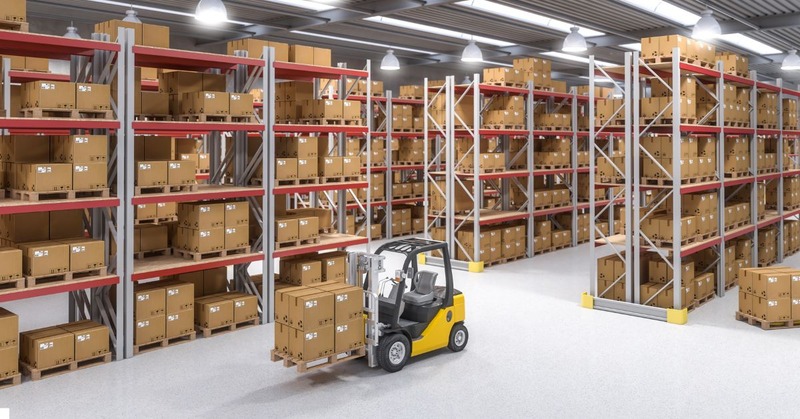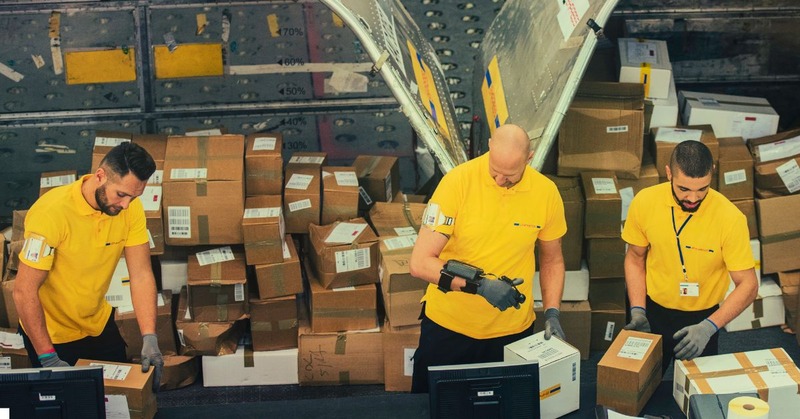Did you know pickers in a warehouse can spend half their day just walking between spots to grab items?
That's a lot of time on the move, pointing to a big need to make their work more efficient and ramp up how fast orders get filled. To beat the competition, especially in fast-paced order delivery, finding smart ways to keep things moving smoothly is key.
That's where wave picking comes in.
It's a popular method that cuts down on unnecessary walking and gets orders to customers faster, making it a go-to strategy for many, from big e-commerce operations to individual brands.
But what is wave picking, really? Well, this guide tackles just that.
In here, we'll talk about its definition, process, examples, and so on. Everything that needs to be discussed about wave picking will be covered here, and once we're done, you'll gain enough understanding to know its importance.
So with that, let's get started.
Table of Contents
- What is Wave Picking?
- What are the Advantages and Disadvantages of Wave Picking?
- How to Optimize Your Wave Picking Strategy
- Conclusion
- FAQs
What is Wave Picking?

Wave picking is a methodical approach to order fulfillment that organizes warehouse picking activities into manageable segments, or "waves", to enhance efficiency and accuracy.
This technique can be a game-changer for businesses looking to optimize their warehouse operations.
How Does It Work?
Wave picking simplifies the order fulfillment process into a three-step cycle: first, it groups similar orders together; next, it schedules these groups or "waves" for picking; and lastly, it carries out the picking according to this schedule.
Here's a quick breakdown of each step to make it clearer:
Pre-Wave Planning
At this initial stage, we get everything set up for smooth picking. We group orders by things they have in common, like when they need to be shipped or what's in them.
This way, everything's organized and ready, helping pickers move quickly and avoid hang-ups.
Picking

Now, pickers get moving on collecting items for the grouped orders. Tackling several orders together means they can get more done faster, slashing the time spent on each order.
Tech tools play a big role here, pointing pickers down the quickest paths and making sure they grab the right items every time.
Post-Wave Processing
After all the picking, we double-check and package up the orders. This crucial step ensures everything's just right and ready for shipping.
The goal is top-notch quality, ensuring customers receive their orders just as expected, without delay.
Types

Wave picking comes in two main types, each suited to different warehouse needs:
Fixed Wave Picking
This method focuses on completing all picks in a wave before anything is packed or shipped. It's straightforward and keeps things organized, making it easier to manage large batches of orders.
Dynamic Wave Picking
This approach is about speed. Items are packed and ready for shipping as soon as they're picked, speeding up the whole process. It's great for quickly moving items out of the warehouse and getting them to customers faster.
Now that you understand what wave picking is, let's now go through its respective advantages and disadvantages.
What are the Advantages and Disadvantages of Wave Picking?

By understanding what makes wave picking good and bad, businesses can make better informed decisions on its implementation.
Advantages
Efficiency in Picking Multiple Orders
Wave picking shines in scenarios where many orders contain the same items, significantly reducing the time needed to retrieve these items from inventory.
Reduced Retrieval Time
When orders share common items or those items are stored close to each other, wave picking minimizes the time spent moving around the warehouse.
Double Verification Process
With separate picking and packing phases, there's an extra layer of verification, enhancing the accuracy of orders. This becomes particularly robust if both stages involve scanning items.
Disadvantages
Increased Space Requirement

Wave picking often necessitates additional staging areas between picking and packing phases, requiring more warehouse space.
Complexity in Handling Diverse Products
Managing a large variety of products within a single wave can challenge packers in efficiently locating the correct items within the staging area.
Dependence on Order Similarity
The effectiveness of wave picking diminishes with the diversity of orders. Its efficiency is tied to the similarity of the items being picked together.
How to Optimize Your Wave Picking Strategy

Optimizing your wave picking strategy involves a few key adjustments to ensure your warehouse runs smoothly and efficiently.
Here’s a simplified rundown of those tips:
Set Clear Delivery Commitments
Make sure you know when your orders need to be out the door. This helps you prioritize which orders to pick first based on their delivery deadlines.
Optimize by Delivery Zones
If you have a lot of orders going to the same place, group them together. This can make shipping them out together more efficient.
Equip Your Team Appropriately

Give your pickers the right tools for the job. Small items might need scanners, while bigger items might require forklifts. Make sure everyone’s trained on whatever equipment they’ll be using.
Review Your Picking Strategy
Look at your orders, your team, and your equipment. Plan your picking waves so you’re always working as efficiently as possible. If it’s a slow time, maybe switch up your strategy to fit the pace.
Regular Performance Reviews
Keep an eye on how well your wave picking is working. Checking in on your process can help you spot problems early and keep things running smoothly.
Prepare for Volume Fluctuations

Before you start, make sure you have enough orders to make wave picking worth it. If not, you might want to wait until you’re busier.
Plan Waves Thoughtfully
Think about what you’re picking, when it needs to ship, and what else is going on in your warehouse. Your waves should make your work easier, not harder.
Visualize and Plan Each Step
Map out your whole process from start to finish. This can help you spot where you might run into trouble and plan around it.
Establish a Sorting Area

You’ll need a place to sort your orders once they’re picked. Make sure you have space set aside for this so everything stays organized.
Adjust Labor Accordingly
The number of people you need might change with wave picking. Sometimes you’ll need more sorters, other times you might need fewer pickers. Keep an eye on your schedule and staff accordingly.
Choose an Effective Warehouse Management System (WMS)
A good WMS is crucial for wave picking because it helps you plan out your waves, track your inventory, and make sure orders are picked on time.
This is where Packiyo comes in.
It’s designed to handle the complexities of wave picking, making it easier to batch waves, schedule orders, and ensure your warehouse runs like a well-oiled machine.
Conclusion
Using Packiyo's WMS features, you can directly address the challenges of wave picking, ensuring your warehouse runs efficiently.
Whether you're looking to minimize picking errors, reduce order fulfillment times, or simply streamline your warehouse operations, Packiyo provides a robust platform to support your goals.
If you need any help with this topic, you can contact us or visit our blog, where we discuss topics such as 'pick and pack', 'case picking', and more.
So to sum things up
Wave picking can significantly enhance warehouse efficiency and order accuracy, but it requires careful planning and the right technology to implement effectively.
By understanding its advantages, disadvantages, and how to optimize the strategy, businesses can make informed decisions about whether wave picking is right for them.
We hope that we've helped you with your query, and we're looking forward to seeing you on our next post.
FAQs
Are there any other ways that I can group my waves? Yes, waves can be grouped by a variety of criteria, including product type, destination, shipping method, or carrier requirements, depending on the specific needs of the warehouse.
Which is better between fixed and dynamic wave picking? The choice between fixed and dynamic wave picking depends on the specific requirements of your operation. Fixed wave picking offers predictability, while dynamic wave picking can provide speed and flexibility.
What’s the difference between wave and zone picking? Wave picking organizes orders into scheduled groups, while zone picking assigns pickers to specific areas of the warehouse. These methods can be used independently or combined for improved efficiency.

